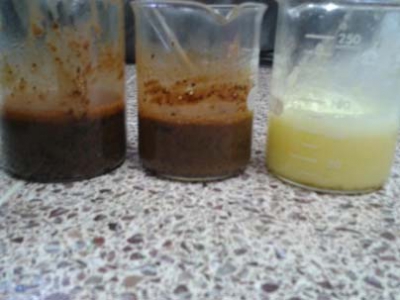Re-using Tea Leaves for Making Liquid Soap

Tea is a common drink in most countries. Usually, people brew it and throw away the dregs. What most people are not aware of is that the dregs of tea are useful matters which contain polyphenol and antioxidant. Such a fact makes four students of the Faculty of Mathematics and Natural Sciences, namely Muhamad Labib Ridlo, Robiyatul Andawiyah, Astriedianova Putri A, Whisnu Aji Pradana (Natural Sciences Education Study Program), and Erna Warisman (Chemistry Study Program) tried to make innovation by producing healthy liquid soap from the dregs.
This research aimed at revealing the procedures to make liquid soap from dregs of tea as well as revealing the concentration for the dregs as the additives for the liquid soap. In this research green tea was used as green tea making process does not include fermentation.
There are several steps to make the liquid soap. First, pour 30 ml olive oil and 16 ml of 40% potassium hydroxide to a chemical glass which is heated up to 50°C until pasta soap is produced. Second, add +25 ml of Aqua Des to the soap, then pour cellulose methyl carboxy sodium which has been developed in heated Aqua Des and stir it. Third, pour sodium benzoate and dregs of tea, then stir them thoroughly. Fourth, add Aqua Des into the liquid soap until its volume reaches 100 ml and stir it thoroughly. Last, put them into a container. Repeat the steps with different concentration for the dregs, namely product A (0% tea dregs), product B (20% tea dregs) and product C (40% tea dregs).
“After producing the liquid soap, the soap was tested by organoleptic test consisting of physical and non-physical organoleptics. It was smeared over 10 respondents’ skin with three products of the liquid soap to test aspects of product presentation, fragrance, freshness and smoothness,” Labib said.
The results could be seen from the three aspects. From the product presentation , product A is considered attractive, product B and C are considered quite attractive. From the fragrance aspetc, product A is considered fragrant, product B is considered average and product C is considered not fragrant. From the smoothness aspect, all products are considered fresh and safe because they do not cause irritation. The results also show that product B is considered as the finest one. (witono N)

